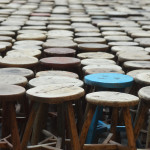
Walk into the serene and historic Centro Fotográfico Manuel Álvarez Bravo—with its massive adobe walls, arched pathways, breezy courtyard peppered with tropical plants, and wide reflective pool—and the scene seems intended for daydreaming. My tourist brain drifts predictably, recalling the written environments found in Gabriel Garcia Marquez novels.
Though a Colombian, his lush colonial courtyards definitely reflect this vision before me. My brain moves on to early images from Manuel Álvarez Bravo: nudes posed against sunny plastered walls and weathered concrete, a drunk man passed out on a stone sidewalk, and that famous image of woman peeking through a checkered wall on her tip toes.
I ask one of the docents if it’s possible to see Bravo’s work here and she replies, “no, not now” and continues on to explain that his work is only occasionally exhibited at the museum.
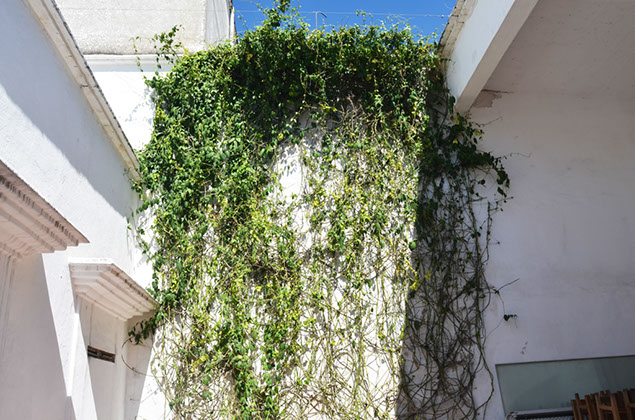


This particular day is one day after the opening of a new show, an exhibit featuring the work of two Oaxacan photographers: Luis Enrique García and Claudia López Terroso. I arrive midday and am one of two visitors—just me and a young Japanese tourist. We wander through the exhibit, occasionally crossing paths, but most of the time, I’m alone with the photographs.
The first group of images are by Luis Enrique García. I ask one of the docents about him and she motions her hand to the courtyard, “He’s the young guy over there,” she says in Spanish. He does appear young, dressed in black jeans and a big gray high tops. If my Spanish was better, I’d go ask him about his photographs. There is no question that there are many stories here.
Large color photographs, mostly portrayals of nude men. One is older and the other is younger. Sometimes they are depicted together, other times alone. Their relationship is unclear to me. Are they lovers? Father and son? Master and apprentice? In one of the photographs, they stand on a field of golden sunflowers.
In another, they are chest to chest, machetes slung to their sides as if about to duel, fully naked. One of the more powerful images in the show is displayed on the floor, right before the precipice of adjoining rooms. A nude, huddled in fetal position on a bed of straw. The image is vaguely biblical, reminiscent of a baby Jesus in the manger. Or perhaps it’s a depiction of rebirth. A man born again to new memories.
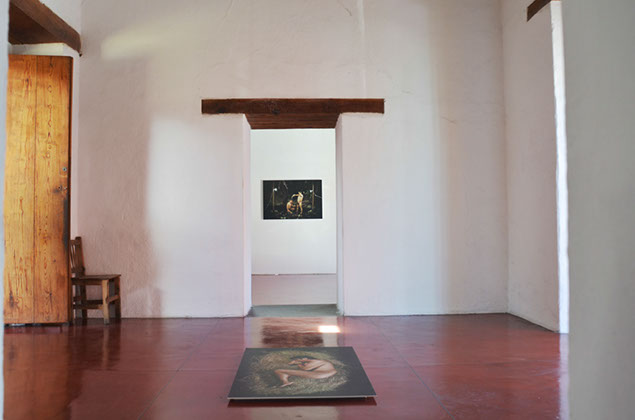
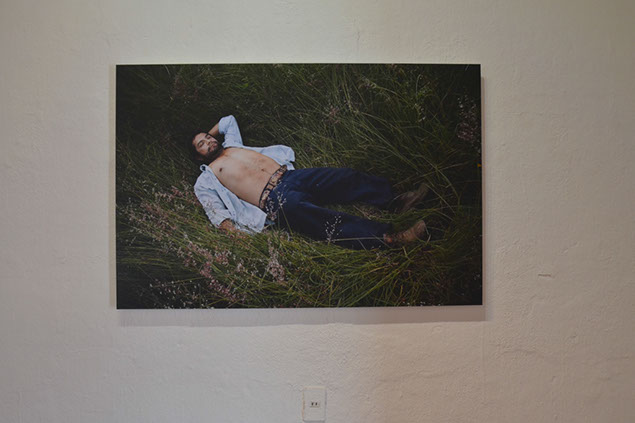

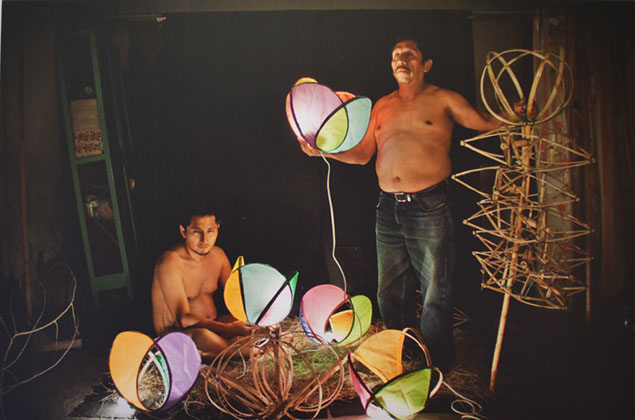
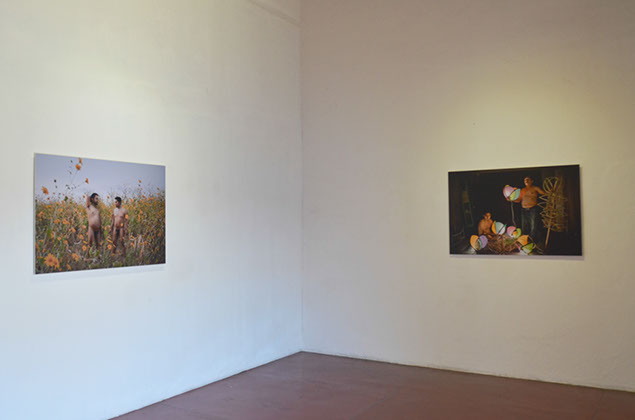
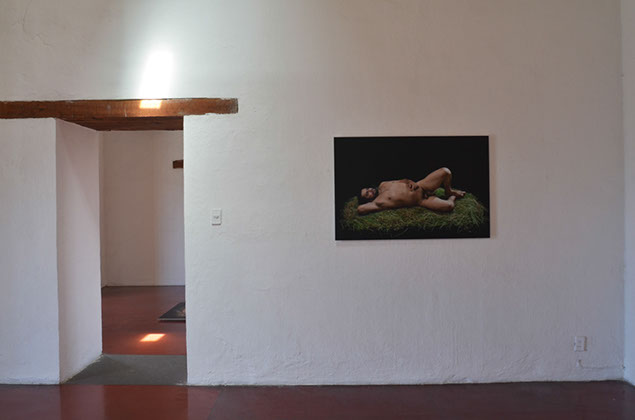
In all of the photographs, there is a staged, self-conscious feeling. The men are posed. There is abundant nudity, much of it full-frontal, and it seems obvious that the vulnerability exhibited is not happenstance. It’s meant to communicate something.
I later learn that Garcia lost his father at a very young age and having very little memory of him, used his photographic process to explore the lack of intimacy and memory of his father. Roughly translated from his artistic statement,
“My father died in an accident when I was a child, leaving me with the feeling that something was incomplete. I have few memories of him because he was not home much. Words, memories and affection were not generated, as we had no time. So I approach other bodies whose figures could fill that void, evoking his being in another skin. I can not compensate for the loss, however, this exploration gives way to new relationships.”
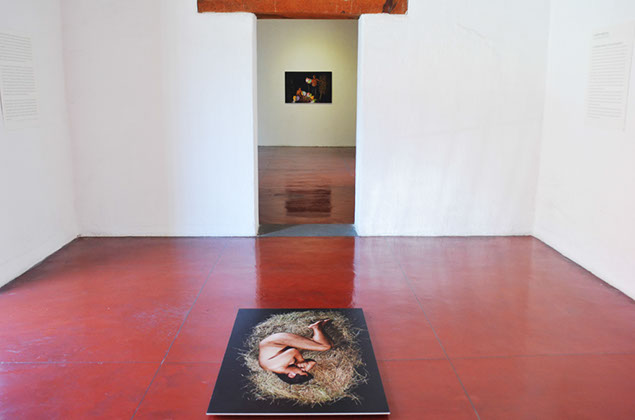


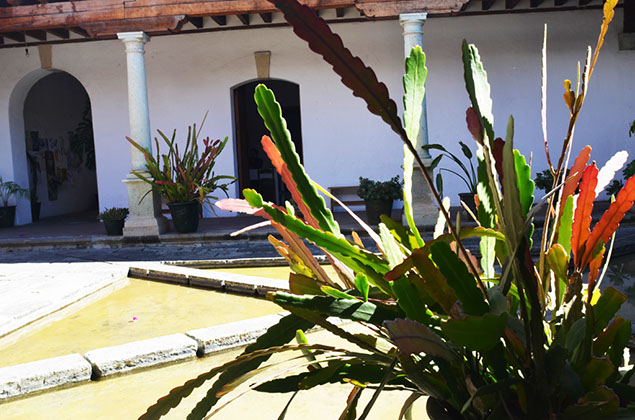
The second series of photos, by Claudia Lopez Terroso, is displayed in another wing of the museum space. In these rooms, the tall street level windows are blackened with cloth. The first room consists of a long table with a few 8x10s under glass—color photographs of interiors and children. On one wall, a pencil drawing that I later realize is connected to one of the big prints in the back room. The drawing and the small prints appear to be a talismans of the artist’s process.
The next room is filled with a series of transparencies set into light boxes in suitcase like containers. A young woman seated in an an colorful adobe home, amid crucifixes and a bright plastic tablecloth. Another box depicts a figure wrapped in cloth and entering a thicket of tropical plants.

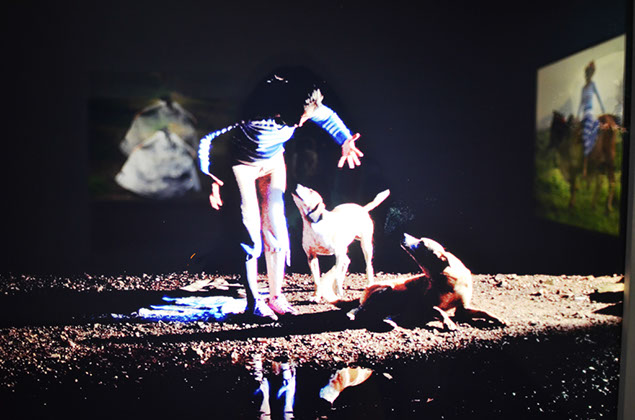
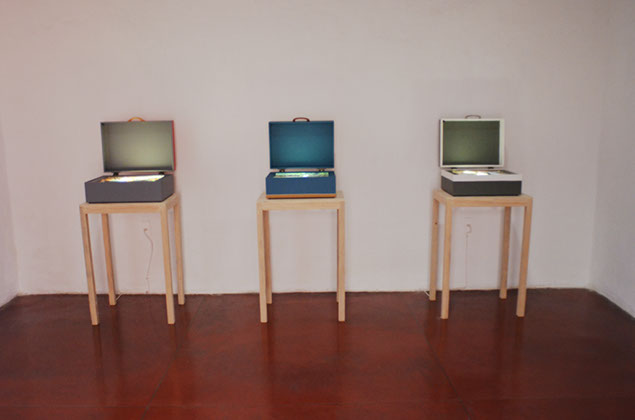
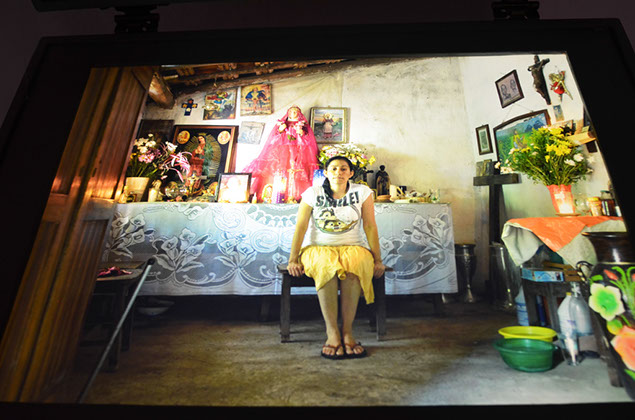
According to López Terroso, shamanistic traditions and the dream state are influential in her work. This is especially evident in the final series of photographs which features large illumined light boxes mounted on the wall.
A woman rides a marbled taupe bull in a misty field, a child plays with dogs in a ray of illumination generated outside of the frame, a bird woman in a paper dress dances in the forest.
López Terroso does seem to be depicting dreamscapes here. The illumination, the depth of color, the use of symbols; all these elements together present the viewer with visions that resemble dreams or visions—something slightly supernatural or hallucinatory.


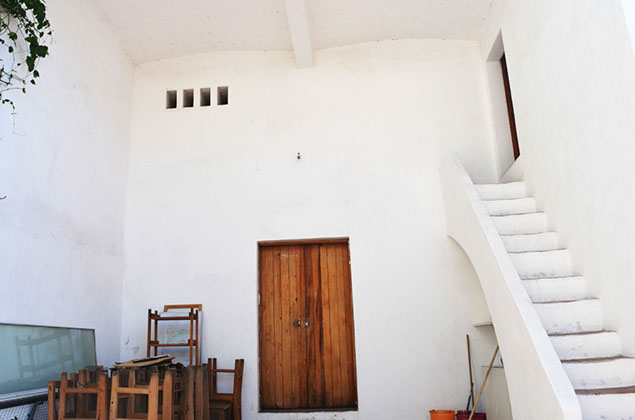
For more information on happenings at the Centro Fotográfico Manuel Álvarez Bravo, visit their website: http://cfmab.blogspot.mx
See also: Claudia López Terroso








